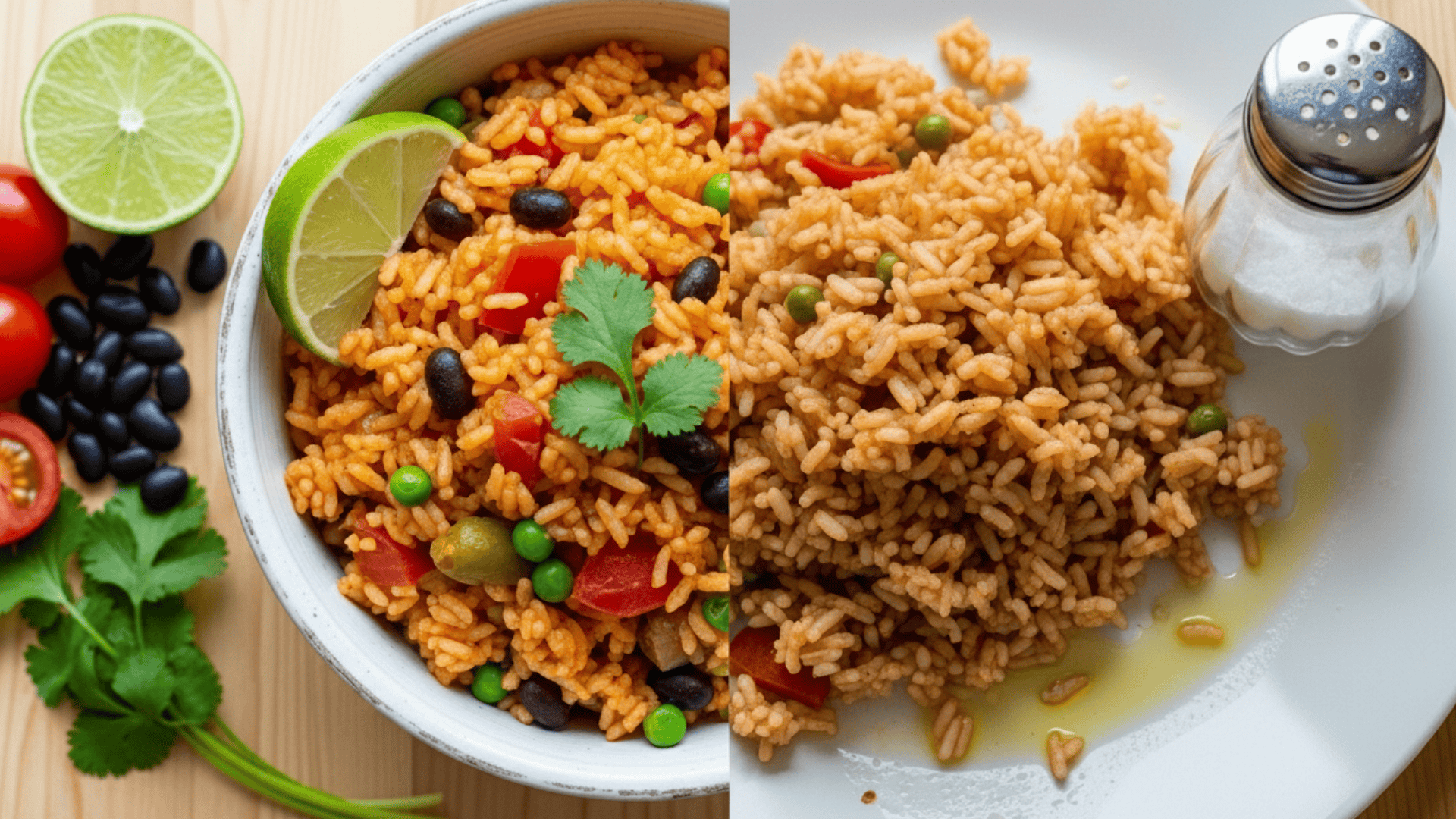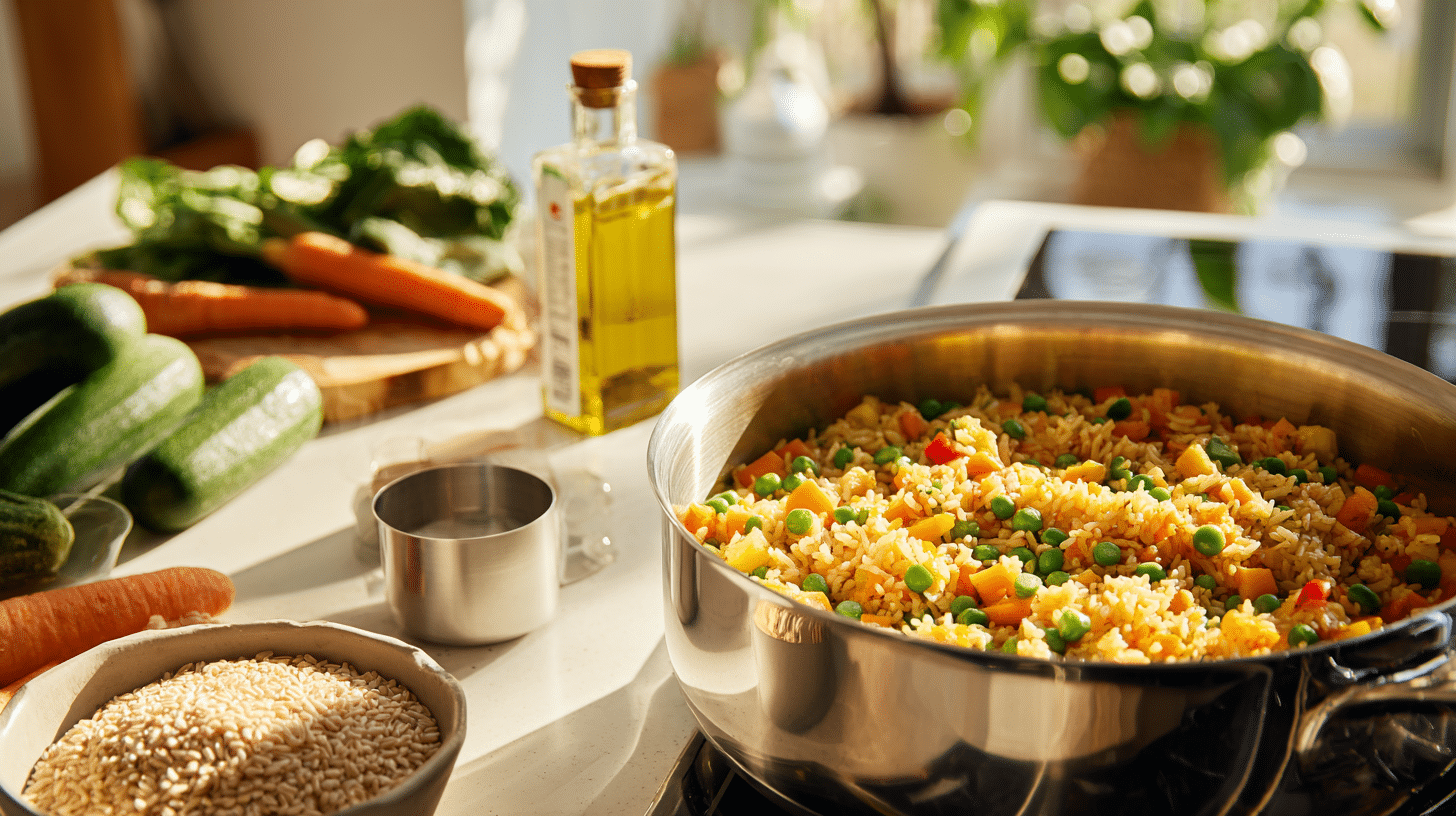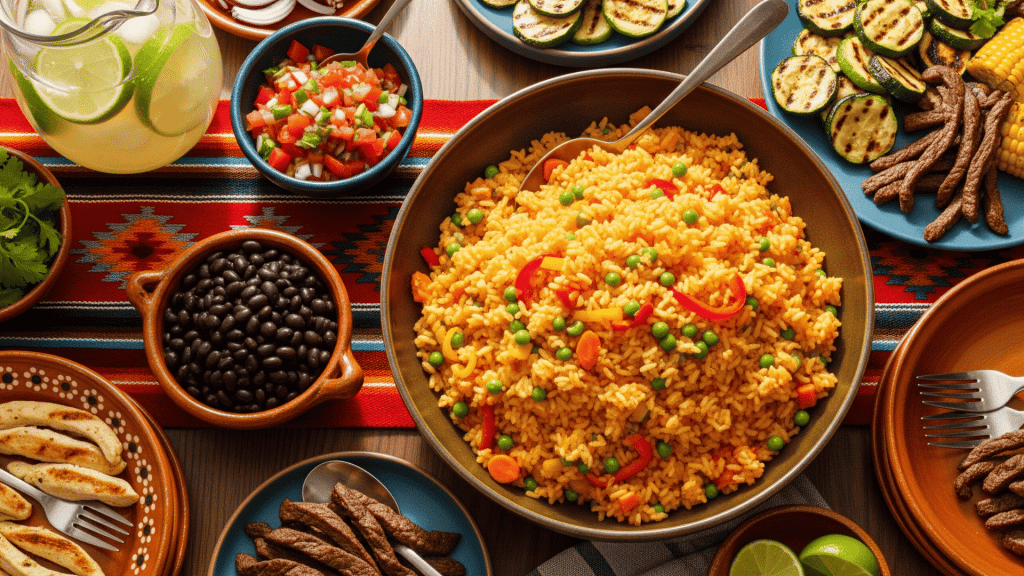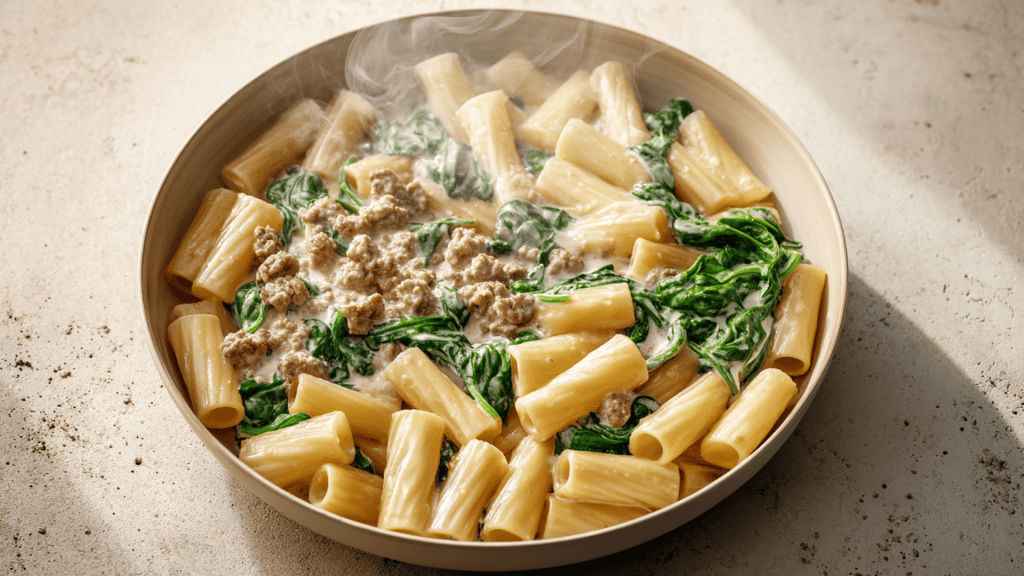Mexican rice is one of the most beloved side dishes in Mexican cuisine, but many people wonder if it’s actually good for them.
This colorful, flavorful dish appears on dinner tables across America almost daily, yet it often gets labeled as “unhealthy” or “just empty carbs.”
The truth is more complicated than that. Mexican rice can absolutely be part of a healthy diet when you understand its nutrition facts and make smart choices about ingredients and portions.
Understanding Mexican rice nutrition and Mexican rice calories is crucial for making informed dietary choices, especially if you’re managing weight, diabetes, or heart health.
The good news is that Mexican rice can be part of a nutritious diet when prepared mindfully and consumed in appropriate portions.
What Is Mexican Rice?
Mexican rice, also called Spanish rice, is much more than just plain white rice. Traditional Mexican rice starts with long-grain white rice that gets toasted in oil until it’s lightly golden.
Then, cooks add tomato sauce or fresh tomatoes, onions, garlic, and chicken or vegetable broth. Common spices include cumin, chili powder, and sometimes saffron for that beautiful yellow color.
Different regions have their own variations. Some families add peas, carrots, or corn. Others use different types of broth or varying amounts of tomato.
Restaurant versions often have more oil and salt than homemade varieties. Packaged Mexican rice mixes from the store usually contain more sodium and preservatives than fresh versions.
Mexican rice rarely stands alone on a plate. It typically comes alongside beans, grilled meats, vegetables, or as part of larger dishes like burritos or enchiladas.
This pairing actually matters a lot for nutrition, as we’ll see later.
Mexican Rice Nutrition
Understanding what’s actually in Mexican rice helps you see the bigger nutritional picture.
A typical cup of homemade Mexican rice contains about 35-40 grams of carbohydrates, which provides energy for your body and brain.
You’ll also get around 4-5 grams of protein and 2-4 grams of fat, depending on how much oil was used in cooking.
The tomatoes in Mexican rice add vitamin C, which helps your immune system stay strong. You’ll also get some folate, which is important for healthy blood cells, and iron, which carries oxygen throughout your body.
Brown rice keeps its fiber-rich outer layer, giving you about 3-4 grams of fiber per cup instead of just 1 gram in white rice. This fiber helps you feel full longer and supports healthy digestion.
The spices used in Mexican rice aren’t just for flavor; they also add nutritional value. Cumin contains iron and may help with digestion.
Garlic has compounds that support heart health. These small additions really add up nutritionally.
Mexican Rice Calories
Mexican rice calories can vary quite a bit depending on how it’s made and where you eat it. A half-cup serving of homemade Mexican rice typically contains 110-140 calories.
A full cup ranges from 220-280 calories. That’s comparable to other rice dishes and fits reasonably into most people’s daily calorie needs.
Restaurant Mexican rice often has more calories because restaurants use more oil and butter to create that rich, satisfying taste.
A cup of restaurant-style Mexican rice can contain 300-400 calories. The extra oil doesn’t just add calories – it also adds saturated fat.
Portion size matters tremendously for calorie control. Many restaurants serve 1-1.5 cups of Mexican rice as a side dish, but a more reasonable portion might be ½-¾ cup, especially when paired with other foods.
Health Benefits and Concerns

Mexican rice has both positive and negative nutritional aspects that are important to understand.
Like many traditional foods, the health impact depends largely on how it’s prepared and consumed as part of your overall diet.
Health Benefits of Mexican Rice
When prepared thoughtfully, Mexican rice offers several nutritional advantages that can support your health goals.
- Steady energy from complex carbs – The carbohydrates and protein work together to provide sustained energy without crashes, unlike simple sugars.
- Lycopene from cooked tomatoes – This powerful antioxidant may help protect against heart disease and cancer, and cooking increases absorption.
- Complete protein when paired with beans – Rice and beans together provide all essential amino acids your body needs for muscle building and repair.
- Natural meal balance – Traditional serving style with vegetables, salsa, and lean proteins helps stabilize blood sugar and provides varied nutrients.
Potential Health Concerns
However, Mexican rice does have some nutritional drawbacks that are worth considering before making it a regular part of your diet.
- High sodium content – Restaurant and packaged versions can contain 600-800 mg per cup, which is one-third of the daily recommended limit.
- Blood sugar spikes from white rice – The high glycemic index can cause rapid blood sugar rises, especially concerning for people with diabetes.
- Calorie density issues – Large restaurant portions can easily exceed 400 calories, equivalent to eating an extra small meal.
- Artificial additives in packaged mixes – Many store-bought versions contain artificial colors, preservatives, and flavor enhancers.
Making Mexican Rice Healthier

You can enjoy Mexican rice as part of a healthy diet with a few simple modifications.
Using brown rice instead of white rice adds fiber, B vitamins, and minerals while providing the same satisfying taste and texture.
Reducing the amount of oil used in cooking significantly cuts calories without sacrificing much flavor. Instead of 3 tablespoons of oil, try using 1 tablespoon plus a little cooking spray.
You can also use low-sodium chicken or vegetable broth for extra flavor without extra calories.
Adding more vegetables boosts the nutrition and helps fill you up with fewer calories. Diced bell peppers, corn, peas, or carrots work wonderfully in Mexican rice.
Some people even add finely chopped zucchini or spinach.
Making Mexican rice at home gives you complete control over ingredients. You can use less salt, choose high-quality oils, add extra vegetables, and control portion sizes.
Homemade versions typically have 30-40% fewer calories and much less sodium than restaurant versions.
Smart Serving Strategies
The key to including Mexican rice in a healthy diet is thinking about it as part of a complete meal, not the star of the show. Here are practical ways to enjoy Mexican rice while maintaining portion control and nutritional balance.
| Strategy | Serving Size | Benefits |
|---|---|---|
| Plate method | ¼ plate rice, ½ plate vegetables, ¼ plate protein | Automatic portion control with balanced nutrition |
| Home portions | ½ to ¾ cup serving | Reasonable calories when paired with other foods |
| Restaurant sharing | Split one side order | Reduces calories and sodium from large portions |
| Meal prep batches | Individual frozen portions | Prevents overeating from large pots |
| Restaurant modifications | Ask for less oil or smaller portions | Lower calories while dining out |
Smart serving strategies help you enjoy Mexican rice as part of a balanced diet rather than making it the main focus of your meal.
The Cultural Perspective

Mexican rice holds deep cultural significance that goes beyond nutrition numbers.
For many families, it’s a comfort food that connects them to their heritage and brings people together around the dinner table.
Completely avoiding culturally important foods can sometimes backfire and lead to feelings of deprivation.
The traditional Mexican way of eating actually supports good health in many ways. Meals typically include a variety of foods, such as rice, beans, vegetables, salsa, and small amounts of meat.
This natural balance provides complete nutrition and helps prevent overeating any single food.
Modern Mexican-American families often adapt traditional recipes to fit current health knowledge. They might use brown rice, add extra vegetables, or reduce oil while keeping the flavors that make Mexican rice special.
Bottom Line: Enjoying Mexican Rice Wisely
Mexican rice can absolutely be part of a healthy eating pattern when you make informed choices about preparation and portions.
The key is understanding that it’s meant to be one component of a balanced meal, not the entire meal itself.
Focus on homemade versions when possible, experiment with healthier ingredient swaps, and pay attention to serving sizes.
Remember that the cultural and social aspects of food matter too – completely restricting foods you love often isn’t sustainable long-term.
Share your tips and recipe modifications in the comments below – we’d love to hear how you make this classic dish work for your health goals!


























